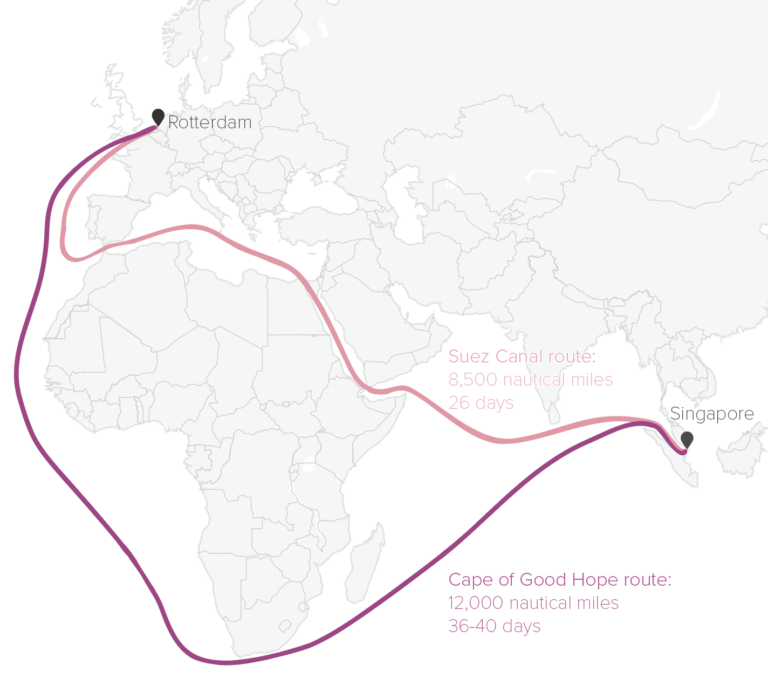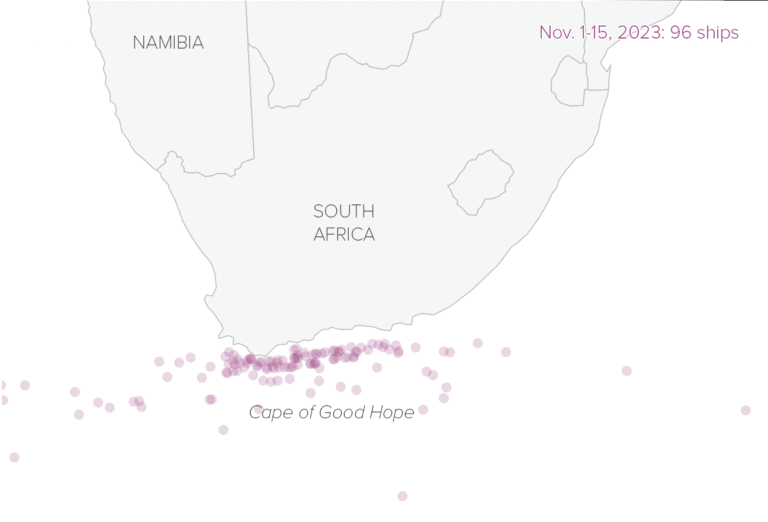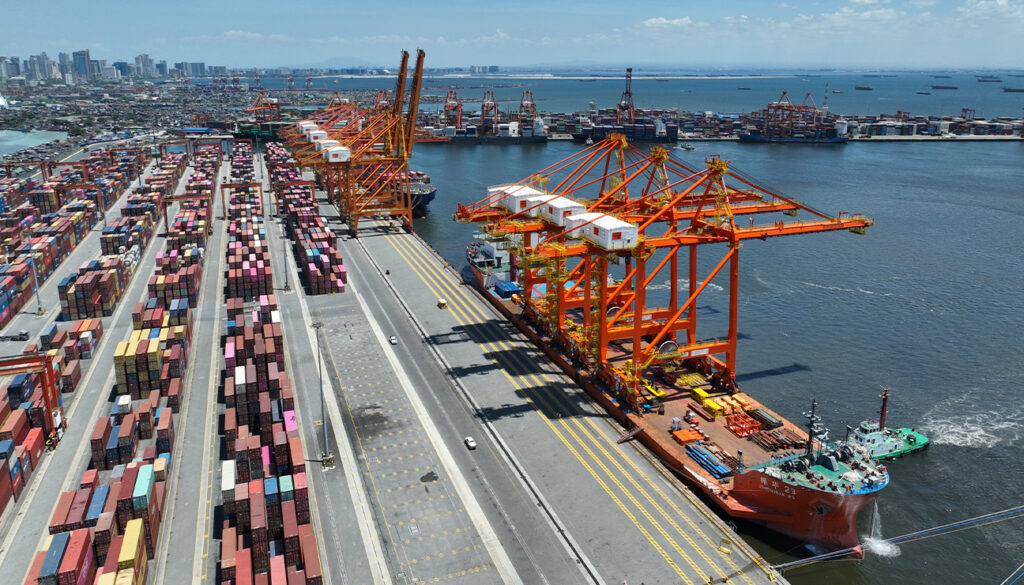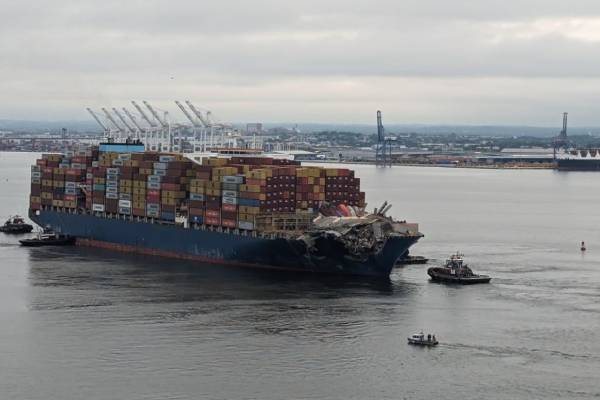The Red Sea has turned from one of the world’s most important trade routes into a danger zone.
Tensions in the region have been escalating since November, when Yemen-based Houthis started launching drone and missile attacks against ships transiting the Red Sea. The Shiite military group’s attacks, meant to pressure Israel to stop its bombardment of Gaza, are leading to sustained delays and disruption in trade, along with surging shipping costs.
An increasing number of companies that transport vital raw materials and fuels have suspended operations in the area. They are rerouting their ships an additional 3,500 nautical miles around the Cape of Good Hope in South Africa — the route the Suez Canal was built to circumvent in 1869.
The Suez Canal is one of the most important trade routes in the world, accounting for around 10 percent of seaborne trade globally.
Volume of goods that pass through the Suez Canal, as a share of global seaborne trade between 2018 and 2023. Data extracted on Feb. 7, 2024.

Freight transport through the Red Sea has collapsed since November.
Daily total capacity of container ships transiting through the Red Sea and the Suez Canal, compared with the expected container capacity*, in TEU (twenty-foot equivalent unit).

Shipping costs for routes transiting through the Suez Canal have also increased massively as a result of the violence in the region.
Container freight rates* for routes originating from China/East Asia.


Marine traffic data shows that despite the higher costs and longer duration, ships have been avoiding the Red Sea …

… and traffic around the Cape of Good Hope increased in the same period.

Each circle represents a unique ship at its most recent position within the 15-day time period.
SOURCE: Kpler, Kiel Institute, Freightos, MarineTraffic




